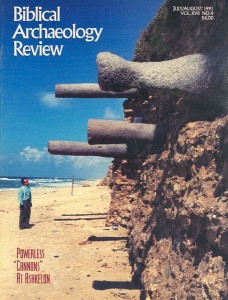
“Gaul hath three parts,” Julius Caesar declared in his memoirs, and now we can say that Ashkelon, too, hath three parts—not the actual city that sits on Israel’s Mediterranean coast, but the series of articles about it that Lawrence E. Stager has been writing in our pages. In the first two installments, Stager led us through the city’s history under the Canaanites, the Philistines and the Phoenicians. He brings his sweeping narrative to a close with an account of the Roman, Byzantine and Islamic eras, a period of more than a thousand years that began with the construction of monumental public buildings and impressive statuary and culminated in the defensive destruction of the city by the famed Moslem general Saladin. As its title, “Eroticism and Infanticide at Ashkelon,” implies, this final chapter examines, among other things, two aspects of ancient life that reveal the contrasting attitudes of Romans on the one hand and Christians and Jews on the other to fundamental questions of human behavior and the value of life—questions that are still very much with us today. Related to this, we print the results of our readers’ poll and some of their widely divergent opinions on whether or not to publish the oil lamps from Ashkelon decorated with erotic scenes.
Stager, Dorot Professor of the archaeology of Israel at Harvard, director of the Harvard Semitic Museum and head of the Leon Levy Expedition to Ashkelon, will be digging again at Ashkelon this summer.
Already a library member? Log in here.
Institution user? Log in with your IP address.

